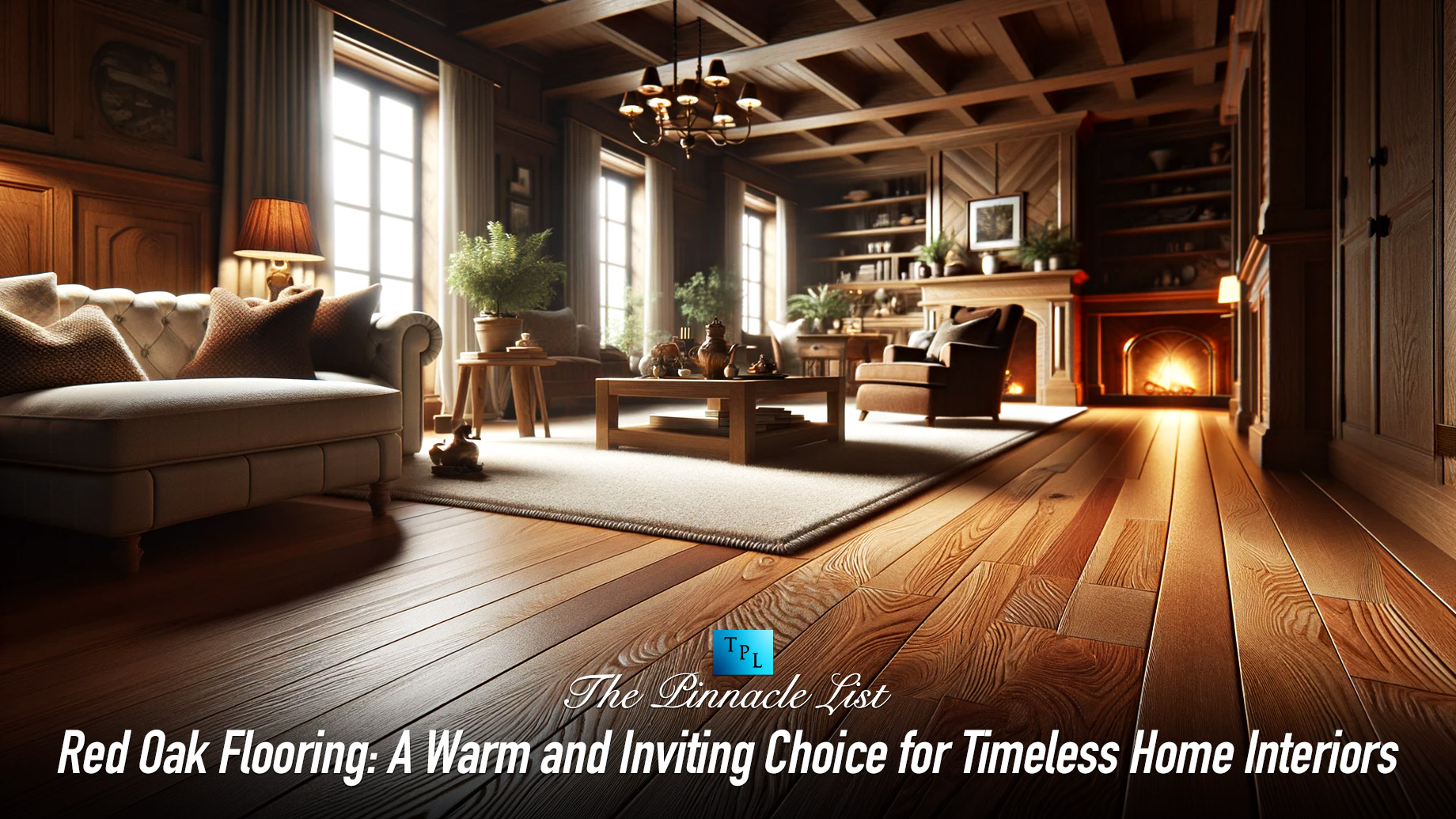
Red oak flooring embodies warmth and elegance, offering a timeless foundation for any home interior. Known for its distinctive grain patterns and durability, red oak floors are not just a flooring choice but a statement of style and tradition.
This type of hardwood flooring has been a favorite among homeowners and interior designers for its versatility in complementing a wide range of décor themes—from classic to contemporary. As we explore the attributes that make red oak a preferred option for flooring, we will unveil how its natural beauty and strength can elevate the aesthetic and value of any space.
The Warmth of Oak Underfoot
The first step onto red oak flooring is often a moment of comfort, as the warm tones beckon with a promise of homeliness. Red oak’s natural hues range from a pinkish-brown to a deep red, creating an especially inviting warm atmosphere during the colder months. Its inherent coloration is a visual delight and tactile, allowing for a cozy ambiance that other flooring materials can’t replicate.
This hardwood’s ability to retain heat makes it a practical choice, particularly for bedrooms and living areas. Unlike stone or tile, red oak doesn’t feel cold, adding to its appeal as a material that prioritizes aesthetics and comfort.
The Durable Elegance of Red Oak
Beyond its welcoming colors, red oak’s durability makes it an attractive option for high-traffic areas. With proper care, a red oak floor can last for decades, sustaining its original beauty through years of wear and tear. Its hardness is measured on the Janka scale, and red oak ranks highly, outperforming softer woods when resisting dents and scratches—a vital characteristic for households with children or pets.
Quality finishes and regular maintenance can enhance red oak’s longevity even further. From traditional urethane to newer oil-based options, homeowners can protect their investment while customizing the sheen and texture to their preferences.
Versatility That Fits Every Style
Red oak’s visual versatility complements a wide range of interior design styles. Whether your home boasts a modern, minimalist aesthetic or a more traditional, ornate decor, red oak floors can be adapted to fit seamlessly. They act as a neutral backdrop that allows for diverse design choices, highlighting the warmth of a rustic interior and the sleek lines of a contemporary space.
This adaptability extends to both the color and grain pattern of the wood. Stains and finishes can be used to change the saturation of the red undertones, offering lighter shades or, when desired, nearly eliminating the reds for a more neutral appearance. Additionally, the pronounced grain of red oak can add character and depth to a room, becoming a design feature in its own right.
Sustainable Style for the Environmentally Conscious
For the environmentally aware consumer, red oak presents a sustainable flooring option. Red oak trees are plentiful in the United States, where sustainable forest management practices ensure a healthy renewal rate. This means that when you choose red oak floors, you’re selecting a product with a low carbon footprint and one that contributes to the maintenance of forest ecosystems.
Pairing the cultural significance of oak—the “tree of life” in many ancient cultures—with modern ecological beliefs, the selection of red oak can be seen as a harmonious meeting between past and present. Sustainable hardwood is an investment in a green future for your home, providing an underpinning of environmental consciousness to your interior design choices.
A Testament to Timeless Appeal
In final contemplation, red oak floors emerge not just as a simple option for those looking to enhance their home interiors but as a commitment to durability, warmth, and versatility. Its appeal lies not merely in the immediate beauty and comfort it brings but also in its ability to stand the test of time, both stylistically and physically. Red oak flooring is a choice that resonates with the timeless elements of design, marrying aesthetic appeal with functional longevity.
Conclusion
Beyond its physical attributes, red oak stands as a beacon of sustainable living, aligning with modern environmental values while offering a nod to oaks’ historical significance. Opting for red oak is, therefore, more than an interior design decision—it’s a step towards creating a living space that is as welcoming as it is resilient and as beautiful as it is conscious.